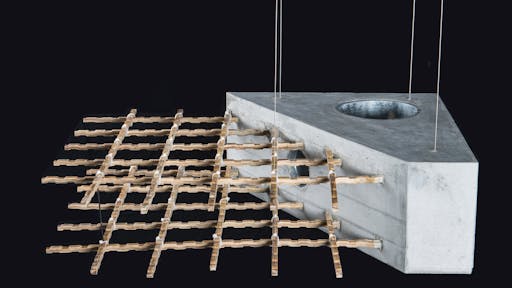Steel-reinforced concrete is the most common building material in the world, and developing countries use close to 90% of the cement and 80% of the steel consumed by the global construction sector. However, very few developing countries have the ability or resources to produce their own steel or cement. Out of 54 African nations, for instance, only two are producing steel. The other 52 countries all compete in the global marketplace for this ever-more-expensive, seemingly irreplaceable material.
But according to Future Cities Laboratories, steel is not irreplaceable. There’s a material alternative that grows in the tropical zone of our planet, an area that coincides closely with the developing world: bamboo. Bamboo belongs to the botanical family of grasses and is extremely resistant to tensile stress and is therefore one of nature’s most versatile products. This has to do with the way the grass evolved, adapting to natural forces like wind. In contrast to wood, the bamboo culm or haulm, which are botanical terms for the stem of a grass, is thin and hollow. This allows it to move with the wind, unlike a tree, which tries to simply withstand any natural forces it is exposed to. This adaptation for flexible movement required nature to come up with a very light but tension-resistant fiber in the bamboo culm which is able to bend in extreme ways without breaking. In its ability to withstand tensile forces, bamboo is superior to timber and even to reinforcement steel.
Bamboo has been used in construction for many years. Given its outstanding tensile properties, replacing steel reinforcement in reinforced structural concrete with bamboo is of high interest to many architects who are of a sustainable mindset.
However, the natural form of bamboo poses many problems when it is used as reinforcement in concrete. Bamboo, if left untreated, can swell with water and rot. Shrinkage and long-term durability are some of the drawbacks of using natural bamboo in structural concrete, which result in its segregation from concrete matrix. As a result, it hasn’t been used to reinforce concrete with much success—at least not until now
Pls comment like and share.


Comments
Post a Comment